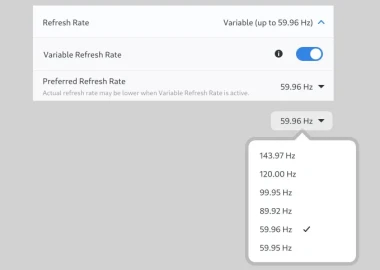GNOME Sees Progress On Variable Refresh Rate Setting, Adding Battery Charge Control
As pointed out in This Week in GNOME, there’s been some continued work on Variable Rate Refresh for the GNOME desktop. The VRR setting within GNOME Settings continues to be iterated on as the developers iron out how they’d like to present the Variable Rate Refresh setting for users. The developers have been discussing how to best present the option as to avoid confusion as well as how it makes the most technical sense as far as the option goes.
Edit: “Variable Refresh Rate - Roadmap” - gitlab.gnome.org/GNOME/mutter/-/issues/3125






Add comment